Category: ARTISTS
ARTISTS
Born in Philadelphia, both sides of his family descended from late nineteenth century Lithuanian immigrants. Edward Wallowitch pursued his talent for photography early and began taking photos when he was just eleven. At the age of eighteen, he was the youngest photographer to be included in “The Family of Man”, Edward Steichen’s legendary exhibition held in 1955 at The Museum of Modern Art, meaning he was the youngest photographer ever to have prints in the Museum of Modern Art in New York. Two of them were taken with a Brownie box reflex camera while he was still at high school.
Wallowitch was a close friend of Andy Warhol in the 1950s and 60s in New York. By then he had moved from Philadelphia to Manhattan and had become an integral part of the Greenwich Village bohemia, alongside his brother John, and sister Anna Mae. Wallowitch produced a kind of poetic street photography with strong sensibility, showing a tender eye for both composition and texture. He spent a lot of his time photographing children and teenagers.
Many of Wallowitch’s pictures served as source material for Andy Warhol’s drawings. He died at the age of 48, cause of death unknown.
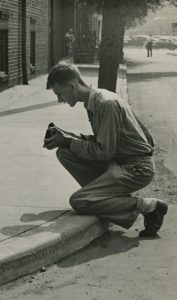
Margaret Bourke-White was a pioneering figure in 20th century documentary photography and is famous for her scenes of modern industry, of the Great Depression, and of political and social movements in the 1920s through 1950s.
As a founding mother of LIFE (she shot the first cover), she became a world-famous symbol of swashbuckling photography. And that she did it in a male world made her success even more spectacular.
During her unique career, Bourke-White was torpedoed in the Mediterranean, strafed by the Luftwaffe, stranded on an Arctic island, bombarded in Moscow, and pulled out of the Chesapeake when her chopper crashed. She was the first Western photographer to document Soviet industry after the revolution, to create a travelog of Czechoslovakia and other Balkan states just before Hitler moved in to ignite World War II, and to be stationed in Moscow just before Germany bombed its former ally.
Aggressive and relentless in pursuit of pictures, Bourke-White had the knack of being at the right place at the right time. For example, she interviewed and photographed Mohandas K. Gandhi a few hours before his assassination in India. And she was the only American photographer in the Soviet Union in 1941 while the battle for Moscow raged. Alfred Eisenstaedt, her friend and colleague, said she was great because there was no assignment, no picture that was unimportant to her. She was also credited for starting the first photo lab at LIFE.
As an artist, Bourke-White continued to use photography as an instrument to examine social issues from a humanitarian perspective.
She witnessed and documented some of the 20th century’s most notable moments, including the liberation of German concentration camps by General Patton in 1945, the release of Mahatma Gandhi from prison in 1946, and the effects of South African labor exploitation in the 1950s. She was a great and tenacious photographer. Her work was her life, and her life was flamboyantly spectacular. Her career was cut short in 1966 due to Parkinson’s disease, she died in 1971.
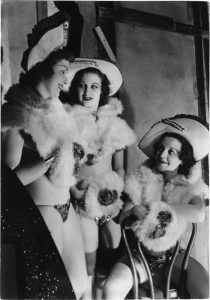
Floris Neusüss is a pioneer of photographic art, particularly known for cameraless techniques and photograms. Neusüss is drawn to this particular method of photography because, as he describes, “perspective and horizon are absent from photograms, so the space is theoretically unending.” He thinks of these more like paintings than photographs because he composes his works in a step-by-step process, and also modifies his prints with brushes or rags dipped in chemicals in painterly gestures. Neusüss is perhaps most famous for his full-body photograms, first shown in the 1960s, which resulted in monumentally sized prints. In the 1970s, he made his Nudograms, so named for their nude subjects. Neusüss draws inspiration from the work of Man Ray and László Moholy-Nagy.
Born in Lennep, Germany, in 1937, Neusüss has dedicated his whole career to extending the practice, study and teaching of the photogram. Alongside his work as an artist, he is known as an influential writer and teacher on camera-less photography. Neusüss brought renewed ambition to the photogram process, in both scale and visual treatment, with the Körperfotogramms (or whole-body photograms) that he first exhibited in the 1960s. Since that time, he has consistently explored the photogram‘s numerous technical, conceptual and visual possibilities.
His works often deal in opposites: black and white, shadow and light, movement and stillness, presence and absence, and in the translation of three dimensions into two. By removing objects from their physical context, Neusüss encourages the viewer to contemplate the essence of form. He creates a feeling of surreal detachment, a sense of disengagement from time and the physical world. Collectively, his images explore themes of mythology, history, nature and the subconscious.
Selected recent exhibitions
2017
Leibniz’ Lager. Sammlungswelten in Fotogrammen, ZKM Karlsruhe, Karlsruhe, Germany
2012
Traumbilder. Fotografien 1958 bis 1983, June 22 – Oct 14, Münchener Stadtmuseum, Germany
2011
A History of Camera-less Photography, Oct 13, 2010 – March 23, V&A Museum, London, UK
2008
Wunderkammer Museum, Deutsches Museum, Munich, Germany (solo)

Rarely have photographers’ careers been as celebrated and honored as Weegee’s. Equally illustrious and renowned as his pictures was Weegee‘s persona, which heralded him as the world’s most famous photographer. For most of his early career Weegee was unrelenting in capturing New York’s seemingly endless affairs. From the grandiose halls of the Metropolitan Opera House to the unsophisticated sanctuary of Sammy’s Bar, the congregation of inquisitive spectators to the abrupt silence of a gangland murder, Weegee navigated the labyrinth of New York’s streets, documenting its untold life.
For an intense decade between 1935 and 1946, Weegee was one of the most relentlessly inventive figures in American photography. Renowned for his ability to be at the scene before anyone else, he dominated the New York landscape. In his own mind, he was the only individual, a cigar wielding visual narrator, who could tell the story of this restless city.
In late 2012, Ryan Adams, a photojournalist expert, discovered the archive in a Midwest storage facility where it had been housed since its purchase in 1994. The following collaboration with Daniel Blau has resulted not only in the current presentation of vintage Weegee prints but also in the 2015 exhibition of early works by Margaret Bourke-White and the recent museum exhibition: Robert Capa – Kriegsfotografien 1943-1945 at the Kupferstich-Kabinett Dresden. Many of the photographs were exhibited for the first time, or first recognized as works by these famous photographs.
Our researches even brought forward that Weegee was already working as a photographer in 1925. Finally Weegee’s photographs get the attention and fame they deserve in history of photography.
Selected recent exhibitions
2019
Weegee – The Famous, Oct 18, 2018 – Jan 20, 2019, Mai Manó House, Budapest, Hungary
2017
Extra!Weegee, Apr 07 – May 28, Fotografiska, Stockholm, Sweden
2015
Weegee by Weegee, Photographs from the Jean Pigozzi Collection, Sept 05 – Nov 08, The Baker Museum, Naples Florida, USA
2013
Weegee. Murder is My Business, May 02 – July 28, Fondazione Palazzo Magnani, Reggio Emilia, Italy
2012
Weegee. Murder is My Business, Jan 20 – Sept 02, International Center of Photography, New York, USA
2006
Scene of the Crime, Sept 20, 2005 – Jan 22, 2006, Getty Museum, Los Angeles, USA
Selected publications
2017
Extra! Weegee, Hirmer Verlag
2014
The Weegee Guide to New York, Philomena Mariani and Christopher George
2013
Weegee: Murder Is My Business, Brian Wallis and Philomena Mariani
1978
Weegee Täter und Opfer, John Coplan
1945
Naked City, Weegee (Arthur Fellig)
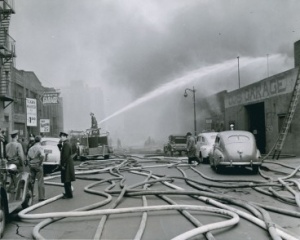
Sofia Valiente received her BFA in Art from Florida International University in Miami in 2012. In 2014, she published her first photo book, Miracle Village, during a residency at Benetton’s Communication Center in Treviso, Italy. Sofia’s work has been published in Time, The Guardian, El Mundo, Vice, American Photo Magazine, and numerous other media outlets. She is represented by the Daniel Blau Gallery in Munich and has been exhibited in London, Paris, and New York City.In 2015, Sofia received the World Press Photo award for Miracle Village (1st prize, portraits, stories) and she is also a recipient of the South Florida Cultural Consortium Artist Fellowship and Burn Magazine’s Young Talent Award.In 2017, she won the Knight Arts Challenge and in 2018 Sofia received the State of Florida Individual Artist grant for Foreverglades. In 2019, Foreverglades the photo book and steamboat replica public art installation was debuted in West Palm Beach, FL.
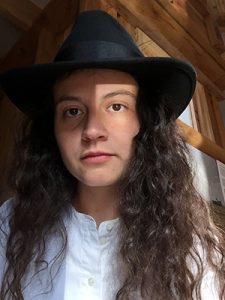
Le Gray is well known for his technical innovations and distinctive photographs as well as for his teaching of other notable photographers. His architectural, landscape and portrait photographs were influential and he was an important contributor to the development of the wax paper negative. In the 1850s the photographer started using collodion-on-glass negatives in preference to paper negatives in order to achieve increased sharpness of the image
and faster exposure times.
His students included Charles Nègre, Henri Le Secq, Nadar, Olympe Aguado, and Maxime Du Camp. In 1851, he became one of the first five photographers hired for the Missions Héliographiques to document French monuments and buildings. Despite his success, he became bankrupt in 1860. He left his life in France for travels in Italy, before settling in Egypt where he continued to take photographs.
Selected exhibitions:
2003
“Sea and Sky: Photographs by Gustave Le Gray 1856-1857”, Victoria and Albert Museum, London, UK
2002
“Gustave Le Gray, Photographer”, Getty Center, Los Angeles, USA
1999
“Museum as Muse: Artists Reflect”, Museum of Modern Art, New York, USA
1998
“Beyond the Edges: An Insider’s Look at Early Photographs”, The Metropolitan Museum of Art, New York, USA
1987
“The Photography of Gustave Le Gray”, Art Institute of Chicago, Chicago, USA
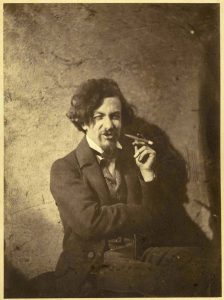
Christa Dichgans was born 1940 in Berlin. She studied from 1960-65 at the Berlin Academy of Arts under Fred Thieler and worked as Georg Baselitz’s assistant from 1984 to 1988. She lived and worked in Berlin and La Haute Carpénée in Southern France.
Exhibitions and Distinctions (Selection)
2019
Galerie Daniel Blau, Munich
2014
Galerie Daniel Blau, Munich
2010
Galerie Daniel Blau, Munich
2006
Galerie Contemporary Fine Arts, Berlin
1997
Galerie Daniel Blau, Munich
1996
Artist group “Die Ecke”, Augsburg
1995-2000
Journeys through Russia and Asia
1995
Museé d’Art Moderne, Nice
Goethe Institut, Moscow
1985
Mannheim Art Association. Municipal Gallery Viesen
1981
Göttingen Art Association
1978-1979
82 etchings for the book “was – wenn/ was nicht/ wenn nicht”, published and commentated by “Y” (A.R. Penck), Galerie Springer, Berlin
1977
Galerie Springer, Berlin
1975
Lerner-Heller Gallery, New York
1974
Galerie Marzona, Bielefeld
1972
Galerie Springer, Berlin
1971
Residence at Villa Romana, Florence
1966-1967
DAAD scholarship in New York
1964-1967
German National Scholarship
Literature (Selection)
Christa Dichgans – Spielzeugbilder, Galerie Daniel Blau, Munich 2010
Christa Dichgans – King Kong Kisses, Contemporary Fine Arts, Berlin 2006
Christa Dichgans – Werke 1969 – 1998, Bern Berlin 2000
Christa Dichgans – Retrospektive, Städtische Galerie Viersen 1995
Christa Dichgans – Werke 1964 – 1991, ed. by Haus am Waldsee, Berlin 1992
Christa Dichgans – Bilder 1967-1972, Galerie Springer, Berlin 1972
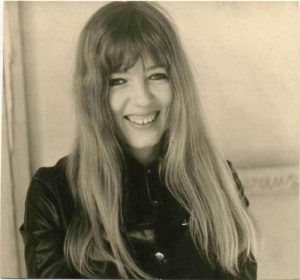
Eugène Leroy (1919-2000) was introduced to the Dutch Old Masters Rembrandt and Jordaens as a teenager, and later to El Greco and Goya. From 1931 to 1932 he studied at the École des Beaux‑Arts in Lille and Paris, but he quickly decided that the methods and approaches of the academies did not correspond with his understanding of art. He moved to Roubaix, where he worked as a Latin and Greek teacher. He consistently pursued his painting during this time. In 1936 he saw “The Jewish Bride” by Rembrandt in the Amsterdam Rijksmuseum and the abstraction of materiality and the flesh were to fascinate him throughout his life. He had his first exhibition in Lille in 1937. He continued to teach during World War II. His post-war works are characterized by dark colors and have a strong connection to the North Sea. This style of painting was thematically interrupted by a crucifixion scene that he created for a chapel in Roubaix in 1946-48. In 1954 he exhibited with Sam Francis, Serge Poliakoff and Marcel Pouget. His first solo exhibition took place at the Tourcoing Museum in Dunkirk in 1956. Leroy’s move to Wasquehal in 1958 is clearly evident in his œuvre, as there is a noticeable shift in his compositions towards more abstraction. From 1955-70 he exhibited in the May Salon in Paris. Numerous exhibitions followed, and the 1988 retrospective in the Musée d’Art Moderne de la Ville de Paris deserves special mention. In 1992 he took part in the documenta IX in Kassel and in 1995 in the Venice Biennale.
Leroy died 2000 in Wasquehal.
Exhibitions and Distinctions (Selection)
2022
Hall Art Fondation, Kunstmuseum Schloss Derneburg, Holle, Germany
2021
MUBA, Tourcoing, France
2009
Donation of 600 works to the Musée des Beaux-Arts de Tourcoing
2004
Musée d’Art et d’Industrie, La Piscine, Roubaix
2001
Musée d’Art Moderne, Villeneuve d’Ascq
2000
Art Association for Rhineland and Westphalia, Dusseldorf.
Albright-Knox Art Gallery, Buffalo (NY)
1997
Kunsthalle Basel
1996/97
Retrospective at Centre díArt Contemporain Bignan, Centre díArt Contemporain Rennes and Musée des Beaux-Arts de Rennes
1996
Grand Prix National de la Peinture
1995
45th Venice Biennale
1994
Galerie Daniel Blau, München
1993
Musée d’Art Moderne et d’Art Contemporain, Nice
1992
Documenta IX, Kassel
1991
Participation at 21st Sao Paolo Biennale
1987
Musée d’Art Moderne, Villeneuve d’Ascq
1988
Stedelijk Van Abbemuseum, Eindhoven
Musée d’Art Moderne de La Ville de Paris
1982
Museum van Hedendaagse Kunst, Gent
1977
Ecole des Beaux-Arts, Lille
1970
Wiener Sezession, Wien
1960-65
Collaboration with Claude Bernard Gallery, Paris
1957
Prix Emile-Othon Friesz
1956
Musée des Beaux-Arts, Tourcoing
Literature (Selection)
Eugène Leroy – Alles ist Farbe, ed. by Kunstverein für die Rheinlande und Westfalen, Dusseldorf, 2000
Bernard Marcadé, Eugène Leroy, Paris, 1999
Eugène Leroy – Peintures, ed. by Kunsthalle Basel, 1997
Hector Obalk, Eugène Leroy – Oil Paintings, Tokyo 1991
Eugène Leroy – Bilder und Zeichnungen, ed. by Galerie Daniel Blau, Munich, 1994
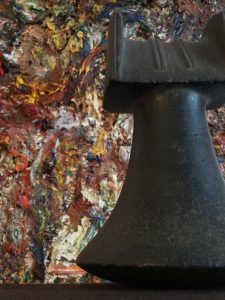
Chuck Close was born 1940 in Monroe,Washington. In 1962 he received his B.A. from the University of Washington, Seattle, and in 1964 his M.F.A from Yale University, New Haven. After a Fulbright grant in Vienna he worked as an art teacher at the University of Massachusetts. A spinal artery collapse in 1988 left Close almost completely paralyzed. He lives and works in New York.
Solo Exhibitions (Selection)
2010
Chuck Close: Portraits,Virginia Museum of Fine Arts, Richmond,Virginia
Chuck Close: Prints: Process and Collaboration, Scottsdale Museum of Contemporary Art, Scottsdale
2009/10
Familiar faces: Chuck Close in Ohio Collections, Akron Art Museum, Ohio.
Faces, Chuck Close and Contemporary Portraiture, Nevada Museum of Art, Nevada
2008
Chuck Close: Seven Portraits, The State Hermitage Museum,Winter Palace, St. Petersburg
2007
Chuck Close: Portaits 1996-2006, Ludwig Forum für Internationale Kunst, Aachen
2003/10
Chuck Close Prints: Process and Collaboration: Bluffer Gallery, University of Houston; travelled to: Metropolitan Museum of Art, New York; Knoxville Museum of Art; Modern Art Museum of Fort Worth,Texas; Boise Art Museum, Idaho; Portland Art Museum,Oregon; Sungkok Museum of Art, Seoul; San Jose Museum of Art, California; Scottsdale Museum of Contemporary Art,Arihona; Corcoran Gallery of Art,Washington
1998/99
Travelling exhibition:The Museum of Modern Art, New York; Museum of Contemporary Art, Chicago; Hirshhorn Museum and Sculpture Garden, Washington; Seattle Art Museum, Seattle; Hayward Gallery, London
1997
Chuck Close, Large Polaroids 1984-1995, Galerie Daniel Blau, Munich
1993
A Print Project by Chuck Close,The Museum of Modern Art, New York “6th Annual Infinity Award of Art”, International Centre of Photography Travelling exhibition:Art Institute of Chicago;The Friends of Photography, Ansel Adams Cent
1984/85
Chuck Close, Paper Works: Herbert Palmer Gallery, Los Angeles; Spokane Center of Art, Cheney,Washington; Milwaukee Art Museum; Columbia Museum, South Carolina
1980/81
Close Portraits, travelling exhibition:The Walker Art Center, Minneapolis; St. Louis Art Museum, Missouri; Museum of Contemporary Art, Chicago;Whitney Museum of American Art, New York
1976
Baltimore Museum of Art, Maryland
1975
Chuck Close: Keith: travelled to Mint Museum of Art, Charlotte, North Carolina; Phoenix Art Museum,Arizona;The Minneapolis Institute of Art, Minnesota
1972
Museum of Contemporary Art, Chicago
1970
Bykert Gallery,NewYork
Literature (Selection)
Christopher Finch, Chuck Close: Life, Munich, 2010
Christopher Finch, Chuck Close: Work, Munich, 2007
Chuck Close: Pinturas 1968/2006, ed. by. Museo Nacional Centro de Arte Reina Sofía, Madrid 2007
Martin Friedman, Close Reading: Chuck Close and the Art of the Self-Portrait. New York,2005
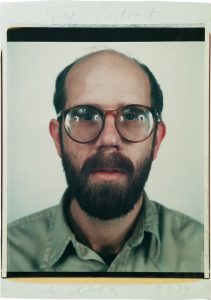
Bisson Frères
Louise-Auguste Bisson (1814-1876) was a 19th century French photographer. He opened a photographic studio in 1841 and soon after this he was joined as a partner by his brother Auguste-Rosalie Bisson (1826-1900). Together, these pioneering photographers became known as the Bisson Frères.
They were active during a rich time of photographic sponsorship and were able to develop processes for creating very large prints (such as the Collodion process, with large negatives) and for taking on important commercial projects. During the 1850s they employed up to thirty employees.
The Bisson brothers were members of the French Society of Photography. They travelled avidly, and a significant number of their many pictures were taken outside of French territory. They are perhaps best remembered for their series of photographs on the Savoy Alps, commissioned by Napoleon III in 1860.
The Bisson Frères also gained recognition for their wide range of photographic styles and for the best-known portrait of of Honoré de Balzac (1842).
Selected exhibitions:
2014
“Impressionist France: Visions of Nation from Le Gray to Monet”, Saint Louis Art Museum,
Saint Louis, USA
2007
“Johnson Gallery, Selections from the Collection 44”, The Metropolitan Museum of Art, New York, USA
2005
“Master Photographs from the Gilman Collection: A Landmark Acquisition”, The Metropolitan Museum of Art, New York, USA
2002
“As It Happened: Photographs from the Gilman Paper Company Collection”, The Metropolitan Museum of Art, New York, USA
1994
“The Waking Dream: Photography‘s First Century, Selections from the Gilman Paper Company Collection”, National Gallery of Art, Washington D.C, USA
1993
“The Waking Dream: Photography‘s First Century, Selections from the Gilman Paper Company Collection”, Edinburgh International Festival, Edinburgh, Scotland






 +49 89 29 73 42
+49 89 29 73 42